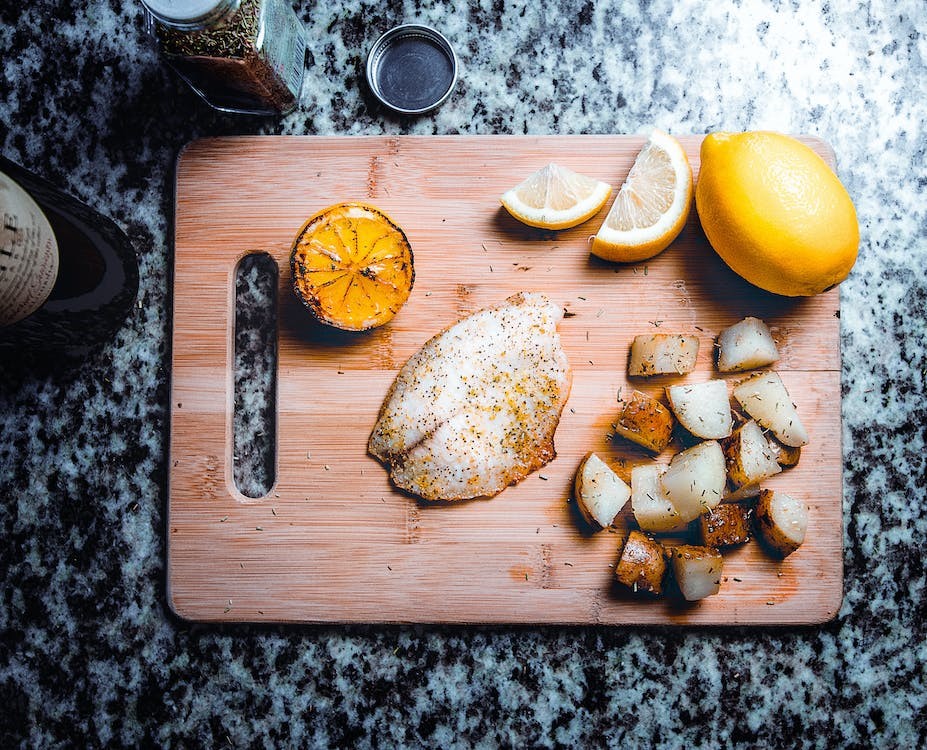News
Heart-Healthy Fats: Omega-3 Fatty Acids
February 16, 2023
Eating fish and seafood may lower risk of heart attack and stroke because they are high in omega-3 fatty acids (eicosapantaenoic acid, or EPA and docosahexaenoic acid, or DHA) and low in saturated fat. Two 4-ounce servings of oily fish per week are recommended as a way to consumer a daily dose of 250 to 500 milligrams of EPA and DHA. If you have heart failure, a daily dose of 2,000 milligrams of EPA and DHA may be helpful to you.
Food sources of healthy omega-3 fatty acids (from both plants and fish/seafood) include:
Sources of ALA (alphalinolenic acid) From Plants:
- Ground flaxseed and flax oil
- Pumpkin seeds and chia seeds
- Walnuts and walnut oil
- Soybean and canola oil
Fish and Seafood High in EPA and DHA:
- Salmon
- Pacific oysters
- Tuna
- Trout
- Mackerel (not King)
- Herring
- Sardines
- Anchovies
Choose fish and seafood low in sodium (salt) such as canned tune, canned salmon and anchovies.
Tips for Adding Omega-3 Fatty Acids to Your Meal Plan
Eat 4 ounces of grilled, baked, broiled or sautéed fish at least twice each week.
- To limit calories, avoid deep-fried fish.
- To limit mercury intake, avoid shark, swordfish, king mackerel, tilefish (golden bass), orange roughy and big-eye tuna. It is especially important that women who are pregnant or planning to become pregnant and breastfeeding women avoid these fish.
- Select oils that provide omega-3 fat, such as canola oil and soybean oil.
- Add flaxseed oil to foods, as it is very high in omega-3 fat. If you use flaxseed, be sure it is ground. Your body cannot digest the beneficial fat if you eat whole flaxseeds.
- Eat walnuts. Walnuts provide much more alpha-linolenic acid than any other nut, Try walnut oil in salad dressings.
- Try new ways to cook fish. Try poaching it in an orange juice and herb mixture, or bake fish with vegetables wrapped in foil. Be careful when cooking fish -- it cooks quickly.
- Read the labels on egg cartons and choose eggs that are high in omega-3 fatty acids. These eggs have more omega-3 fats than regular eggs because the chickens that lay the eggs are fed omega-3-fortified feed. Keep in mind that egg yolks contain cholesterol, so limiting your egg consumption is important.
- Avoid deep-fried fish to limit calories.
How Much Omega-3 Fatty Acid (EPA & DHA) Is in Fish and Seafood?
| EPA & DHA Content in 3 Ounces of Cooked Fish/Seafood | Type of Fish/Seafood |
| 1000-1500 milligrams |
Herring Wild Mackerel Rainbow Trout Wild and Farmed Sablefish Salmon Canned Salmon Wild (king) and Farmed Bluefin Tuna |
| 500-1000 milligrams |
Mussels Oysters Wild Salmon (sockeye, coho, chum & pink) Sardines Swordfish Trout Albacore Tuna |
| 200-500 milligrams |
Catfish Wild Crab (king, Dungeness & snow) Flounder Grouper Wild Ocean Perch Pollock Seatrout Snapper Tuna (canned in water) |
| Less than 200 milligrams |
Blue Crab Wild Catfish Farmed Cod Wild Haddock Wild Scallops Wild Shrimp Wild Surimi (imitation crab) Farmed Tilapia |
Fish Oil Supplements
To reduce high triglycerides in your blood, you may need a daily supplement that providers two to four grams of EPA/DHA. Use of supplements to lower triglycerides should be done under the supervision of a qualified clinician.
Sources
